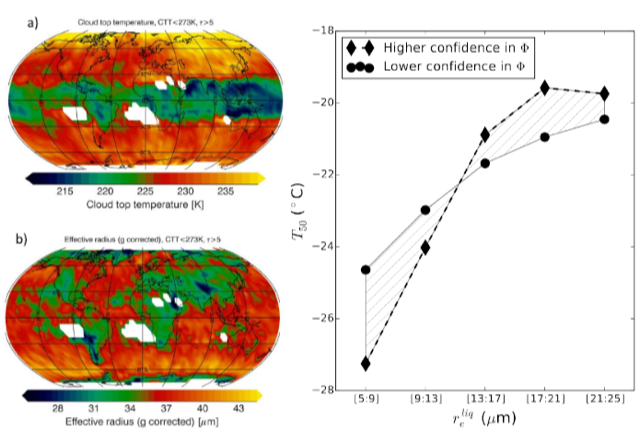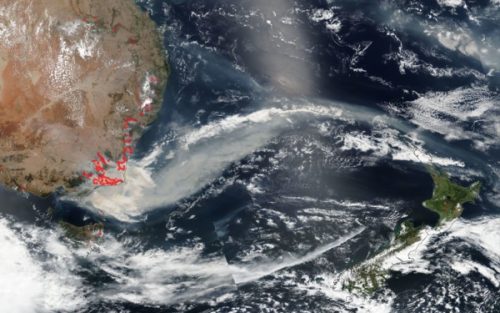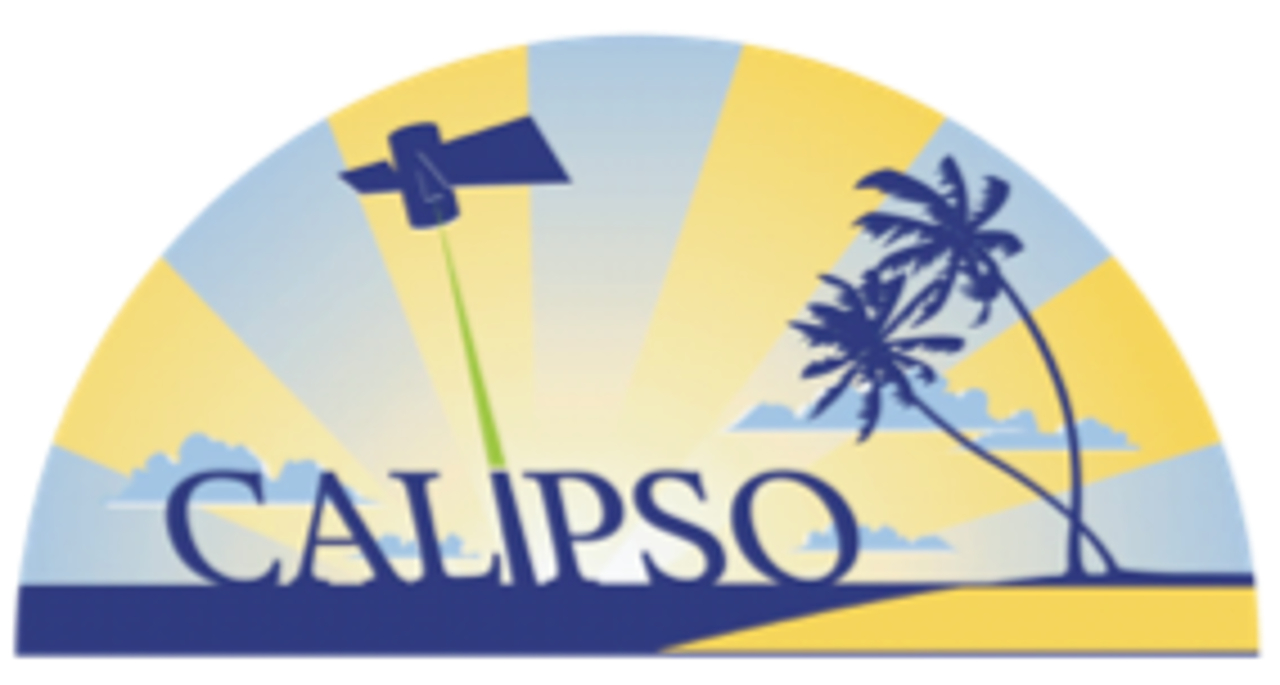New insights into cloud microphysical processes from combined POLDER-MODIS Level-2 observations “PM-L2” – March 2020
New insights into cloud microphysical processes were inferred from the combined POLDER-MODIS dataset developed by LOA and produced and distributed by AERIS/ICARE. Two recent studies investigated cloud microphysical processes that are critical to understand for a correct representation of cloud feedback in numerical weather and climate models. The results are detailed in two recent papers using the PM-L2 Version 3.00 data sets globally.
The first paper by Coopman et al (GRL, 2020) shows that liquid clouds do not need to be as cold to switch from liquid to ice if they are composed of large droplets (Illustration 1). The result holds independent of meteorological conditions such as latitude, large-scale air ascent, and humidity. The study is the first to investigate this question globally, exploiting a synergy of observations from two passive space-based instruments: POLDER/PARASOL operated by CNES and MODIS/AQUA operated by NASA. The results are particularly relevant to the questions of whether clouds will amplify warming in future climates and the characteristics of clouds and precipitation over the remote Southern oceans.
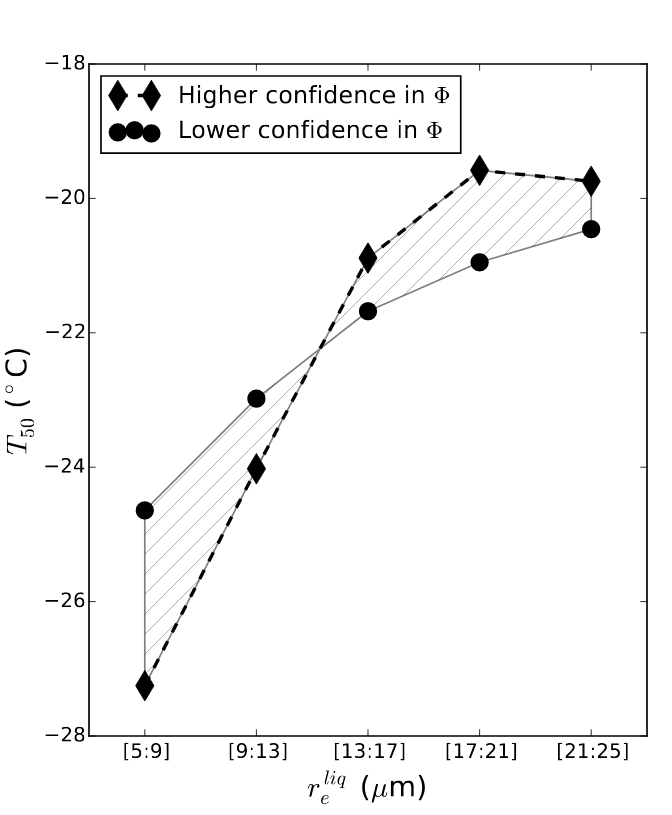
The second paper by Van Diedenhoven et al (JGR, 2020) provides a global assessment of collocated cloud-top ice size, shape and scattering properties observations, again derived from the synergistic use of POLDER and MODIS observations (Illustration 2). It is shown that the ice scattering asymmetry parameters are found to decrease with increasing effective radius, contrary to commonly used optical models. This result might have important implication for constraining better the optical properties of ice clouds in models and in turn could impact the estimation of ice cloud radiative forcing. Also the observations suggest that the temperature dependence of cloud top ice size and shapes are commonly dominated by vapor growth processes which is an important result for the representation of ice cloud processes in numerical models.
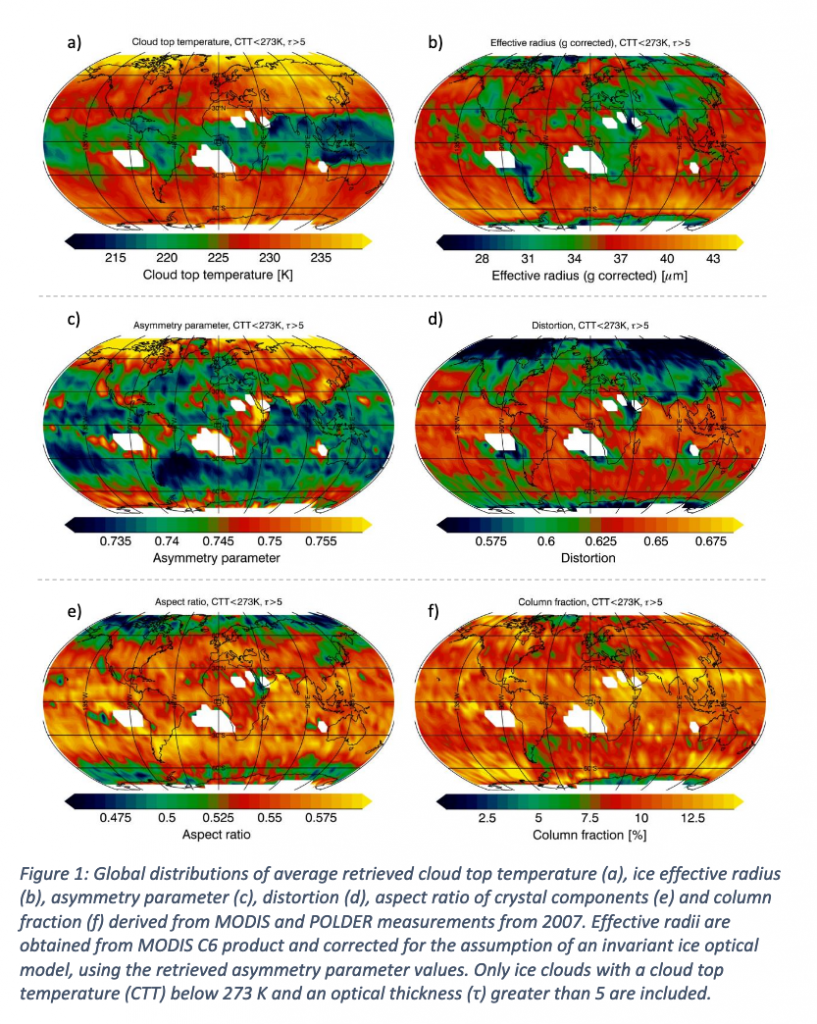
The POLDER-MODIS combined products are available through the ICARE archive:
https://www.icare.univ-lille.fr/archive?dir=PARASOL/PM-L2/
More information on PM-L2 on the ICARE PARASOL “Products” page:
https://www.icare.univ-lille.fr/parasol/products
The papers are available online at :
Coopman et al : Space-based analysis of the cloud thermodynamic phase transition for varying microphysical and meteorological regimes, Geophysical Research Letters: https://agupubs.onlinelibrary.wiley.com/doi/10.1029/2020GL087122
Van Diedenhoven et al : Global statistics of ice microphysical and optical properties at tops of optically thick ice clouds, Journal of Geophysical Research Atmosphere : https://agupubs.onlinelibrary.wiley.com/doi/abs/10.1029/2019JD031811

